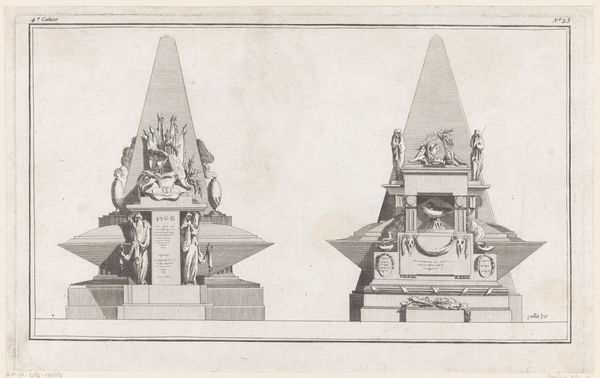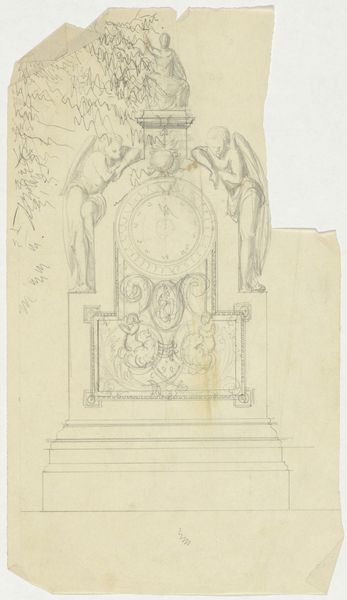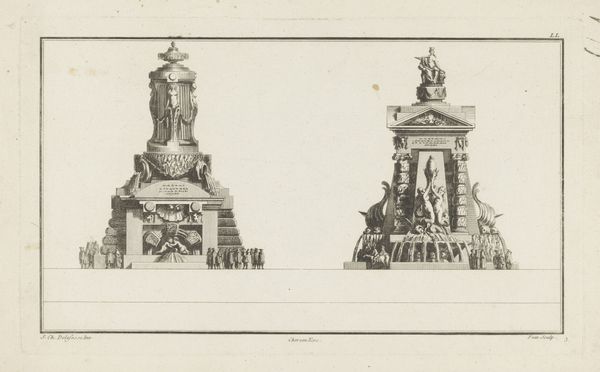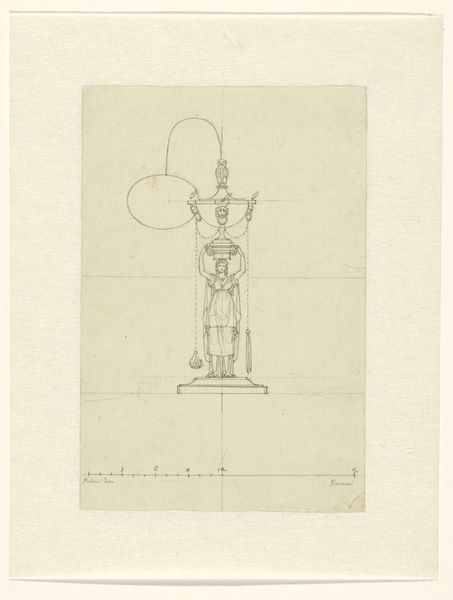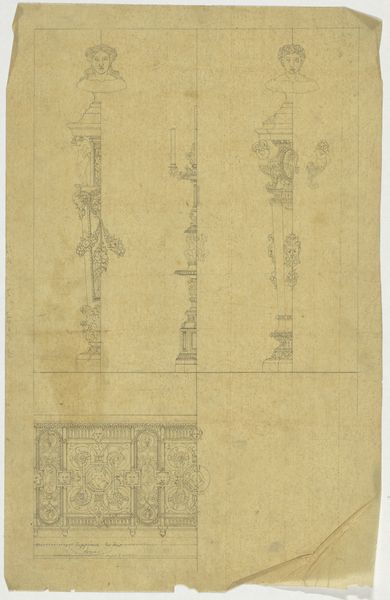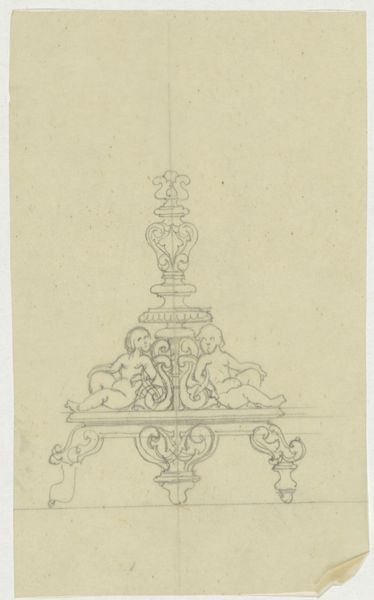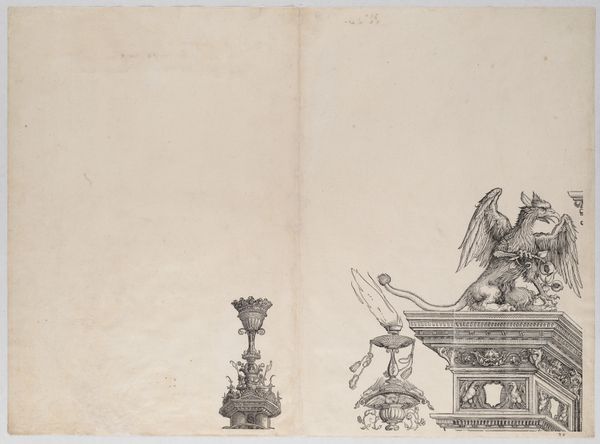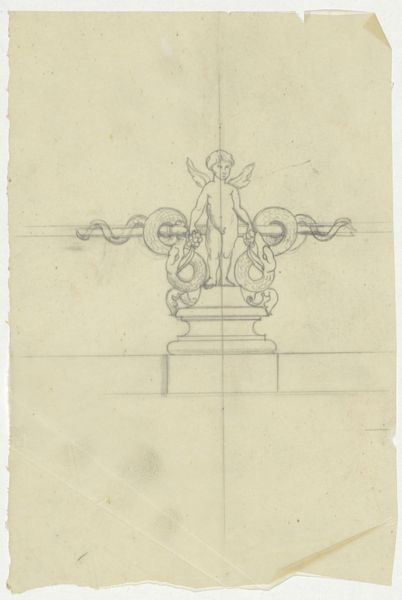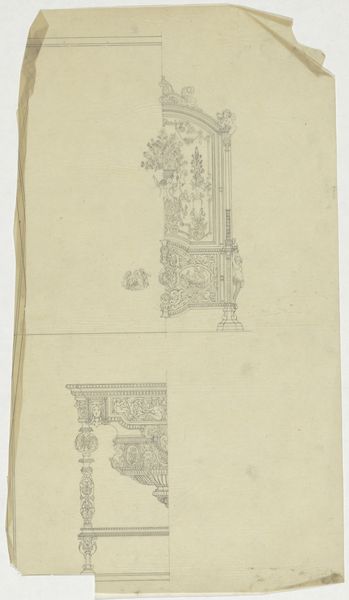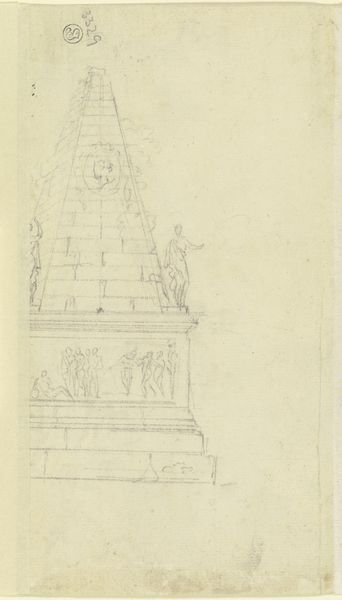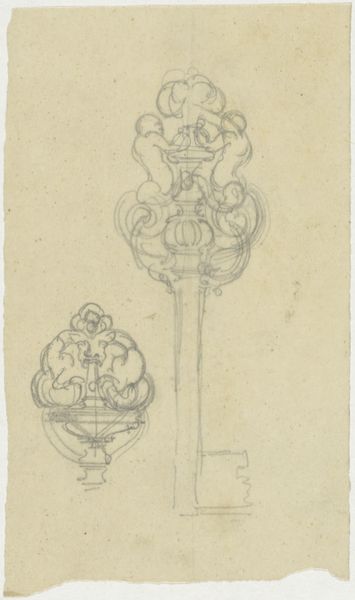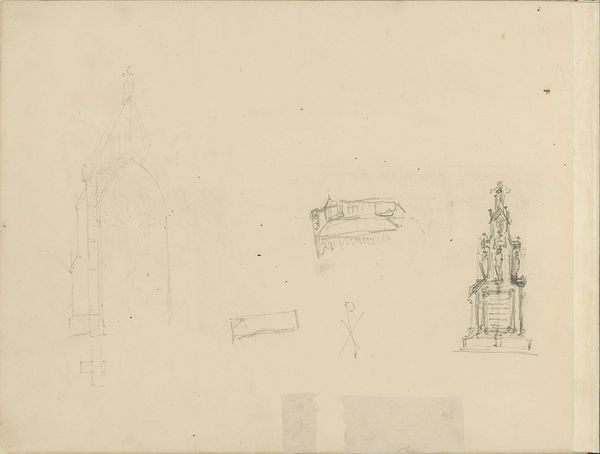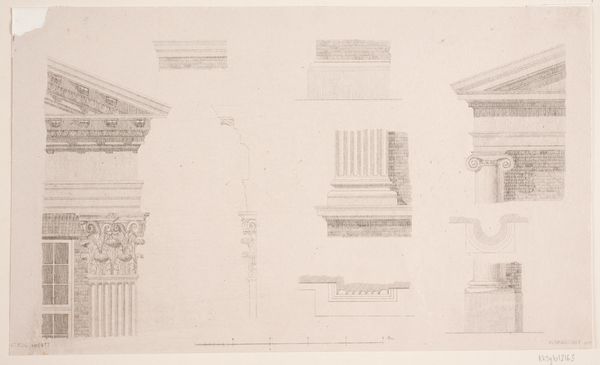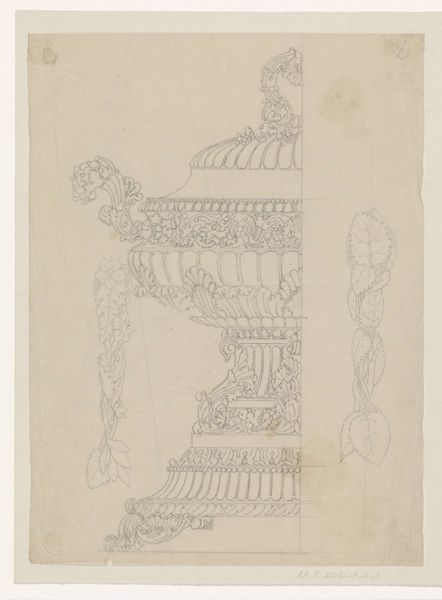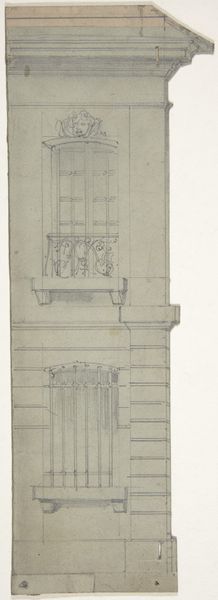
Design for a Stage Set at the Opéra, Paris: Balustrade wtih Lamp Posts 1830 - 1890
0:00
0:00
drawing, print, pencil, architecture
#
drawing
#
neoclassicism
# print
#
pencil
#
cityscape
#
architecture
Dimensions: Irregular sheet: 5 1/16 x 17 3/4 in. (12.8 x 45.1 cm)
Copyright: Public Domain
Curator: This drawing, dating from somewhere between 1830 and 1890, is titled "Design for a Stage Set at the Opéra, Paris: Balustrade with Lamp Posts," by Eugène Cicéri. Editor: My initial impression is one of restraint. The subdued pencil tones, combined with the architectural subject matter, evoke a sense of cool formality and poised observation. Curator: The design certainly embodies the Neoclassical ideals prevalent during that period, reflecting the Opéra's role as a symbol of French cultural authority. These theaters served not only as entertainment venues, but also as powerful spaces that could unite audiences, sometimes as orchestrated displays of political solidarity. Editor: Absolutely. And consider the graphic simplicity, how Cicéri has carefully rendered depth and dimension while maintaining a strictly linear quality. This clarity lends itself so perfectly to architectural blueprints, underscoring a focus on precision and measured control of visual space. Curator: Remember also the socio-economic factors that determined who attended these performances and shaped their expectations. This staged world had to appear plausibly real and transport spectators away from quotidian concerns. These set designs gave the patrons of the Opéra a vision of Paris that was grand, romantic and ultimately, consumable. Editor: The linear rendering gives the subject a removed sense of artificiality. It’s the line work itself, with its insistence on planar surfaces, that reminds us of the inherently artificial construct—a two-dimensional illusion striving for, yet inherently failing to achieve, complete spatial authenticity. Curator: That artifice was a critical aspect of how nineteenth-century Parisian society constructed its identity, right? Editor: Indeed. It also encourages reflection about the relationship between design and execution. Seeing these lines reminds us of the constructed and controlled perspective employed here. A very interesting peek at the theater of Paris at that time. Curator: Viewing Cicéri's designs, and keeping in mind that context, can make us reconsider the role of public spaces and theatrical design in the construction of collective experience, and wonder who has access.
Comments
No comments
Be the first to comment and join the conversation on the ultimate creative platform.
